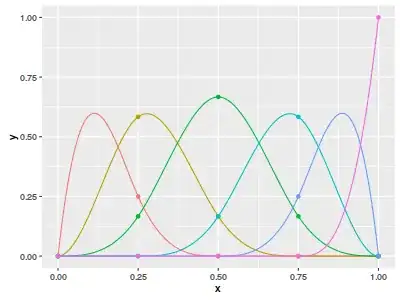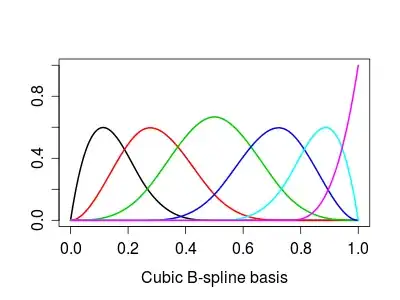Here's an autoplot method for the "basis" class (which both bs and ns inherit from):
library(ggplot2)
library(magrittr)
library(reshape2)
library(stringr)
autoplot.basis <- function(basis, n=1000) {
all.knots <- sort(c(attr(basis,"Boundary.knots") ,attr(basis, "knots"))) %>%
unname
bounds <- range(all.knots)
knot.values <- predict(basis, all.knots) %>%
set_colnames(str_c("S", seq_len(ncol(.))))
newx <- seq(bounds[1], bounds[2], length.out = n+1)
interp.values <- predict(basis, newx) %>%
set_colnames(str_c("S", seq_len(ncol(.))))
knot.df <- data.frame(x=all.knots, knot.values) %>%
melt(id.vars="x", variable.name="Spline", value.name="y")
interp.df <- data.frame(x=newx, interp.values) %>%
melt(id.vars="x", variable.name="Spline", value.name="y")
ggplot(interp.df) +
aes(x=x, y=y, color=Spline, group=Spline) +
geom_line() +
geom_point(data=knot.df) +
scale_color_discrete(guide=FALSE)
}
This lets you just call autoplot on an ns or bs object. Taking jbowman's example:
library(splines)
x <- seq(0, 1, by=0.001)
spl <- bs(x,df=6)
autoplot(spl)
which produces:

Edit: This will be included in the next version of the ggfortify package: https://github.com/sinhrks/ggfortify/pull/129. After that, I believe all you should need is:
library(splines)
library(ggfortify)
x <- seq(0, 1, by=0.001)
spl <- bs(x,df=6)
autoplot(spl)

